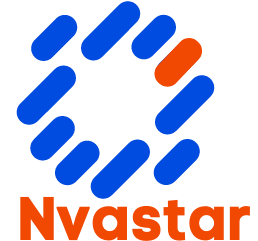Vigabatrin is a therapeutic agent that has gained attention for its special operational method and clinical promise. First formulated as an anti-seizure medication, it works by inhibiting the enzyme responsible for decomposing gamma-aminobutyric acid, a brain chemical that plays a crucial role in modulating excitability in the brain. This distinctive approach has made vigabatrin a valuable option for people with specific types of epilepsy that are unresponsive to traditional therapies.
The vigabatrin solution, which is formulated for convenient administration, has increased its application beyond just adult patients, offering an significant treatment route for younger patients as well. As we delve deeper into the advantages and issues associated with this medication, it becomes evident that grasping its effects can help harness its full potential in controlling epilepsy and maybe other brain-related issues. This exploration will also encompass safety profiles, patient feedback, and the critical nature of adherence to treatment protocols.
Mode of Function
This medication is an innovative anticonvulsant that mainly functions as an irreversible inhibitor of the enzyme GABA transaminase. This enzyme is responsible for the degradation of gamma-aminobutyric acid, which is the main suppressive neurotransmitter in the CNS system. By blocking GABA transaminase, vigabatrin effectively increases the levels of GABA in the brain, leading to improved inhibitory activity. This mechanism contributes to its efficacy in controlling seizures in patients with seizure disorders, especially those with complex partial seizures.
The elevation of GABA levels facilitated by vigabatrin results in a pronounced reduction of neuronal hyperactivity. This heightened inhibitory tone plays a vital role in balancing neuronal circuits, thereby stopping the abnormal electrical activity that defines seizures. In essence, vigabatrin alters the balance of neurotransmission in the brain, strengthening the inhibitory pathways that are essential for maintaining seizure control, particularly in treatment-resistant cases.
Vigabatrin distinct mode of action distinguishes it from other antiepileptic medications. While many conventional anticonvulsants modulate ion channels or receptor activity related to neurotransmission, vigabatrin directly alters the availability of a key neurotransmitter. This direct influence on GABA metabolism sets the foundation for its therapeutic benefits, as well as its particular side effect effects, including vision problems that can occur with extended use. Understanding this mechanism is key to unlocking the full potential of vigabatrin in clinical practice.
Clinical Applications
Vigabatrin is primarily utilized in the management of complex partial seizures, particularly in patients who have not responded well to other antiepileptic drugs. The drug’s mechanism of action consists of the permanent blocking of the enzyme GABA transaminase, causing higher concentrations of the neurotransmitter GABA in the brain. This adjustment of GABAergic activity assists in stabilizing neuronal excitability, rendering vigabatrin an efficient choice for refractory seizure management.
In addition to its use in epilepsy, the vigabatrin formulation has shown potential in the treatment of baby spasms, a form of epilepsy commonly occurring in infancy. The drug has been linked to meaningful advancements in seizure control in pediatric patients who suffer from this condition. Timely commencement of therapy can lead to enhanced developmental outcomes, making it crucial for healthcare providers to regard vigabatrin as a viable option in pediatric patients with this complex disorder.
Another notable application of vigabatrin is for addressing certain instances of neurosensory impairment, particularly when associated with anti-seizure strategies. The drug’s unique regulatory role in increasing GABA levels might lead to cognitive and behavioral improvements in specific individuals. Ongoing research continues to explore additional indications for vigabatrin solution, that could increase its clinical relevance in neurology beyond the currently accepted applications.
Safety and Adverse Effects
Vigabatrin is recognized for its efficacy in addressing certain types of epilepsy, notably infantile spasms and treatment-resistant complex partial seizures. However, like any medication, it is important to consider its safety profile and the potential side effects that may occur. One of the most concerning safety issues associated with vigabatrin is its risk to result in permanent vision loss. This side effect stems from the drug’s impact on the retina and underscores the need for frequent ophthalmologic assessments during treatment.
Patients using vigabatrin may also suffer from a number of other side effects, including but not limited to fatigue, dizziness, and weight gain. These can vary in intensity and may affect quality of life for certain individuals. It is crucial for healthcare providers to get input on these potential adverse effects with patients before starting treatment, ensuring they are completely informed and able of making informed decisions about their care. Low Taper Fade
Close monitoring is a critical aspect of ensuring the safety of patients on vigabatrin. Frequent follow-ups and visual field testing are suggested to identify any changes in vision swiftly. Additionally, patients should be encouraged to report any unusual symptoms or changes in their health status quickly. With sufficient monitoring and patient education, the benefits of vigabatrin can often surpass the downsides, permitting individuals to control their conditions safely while limiting possible harm.
